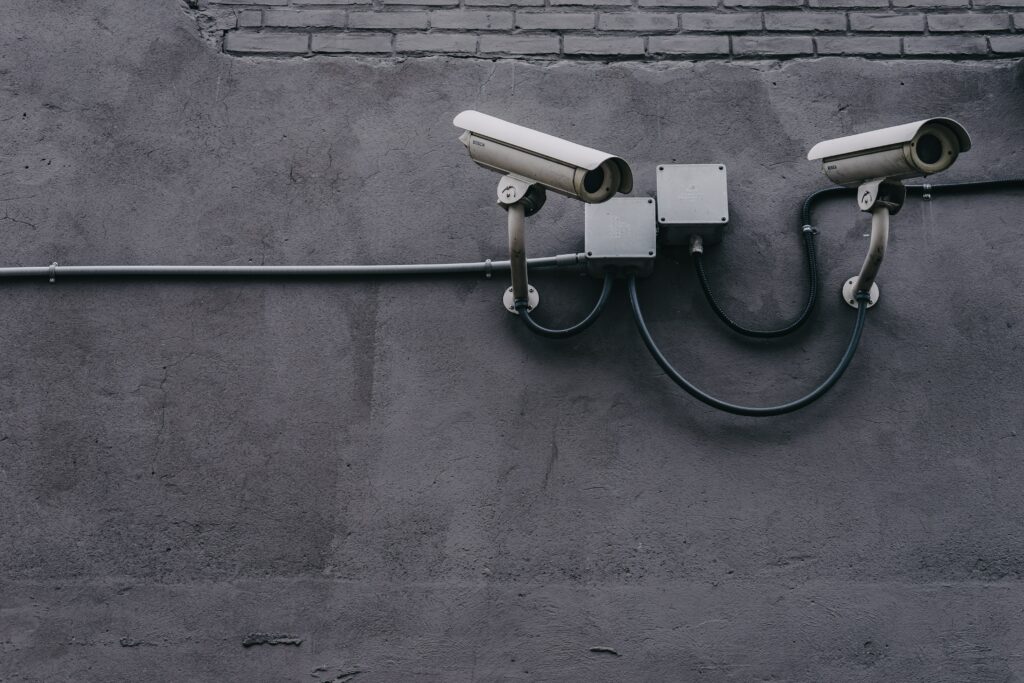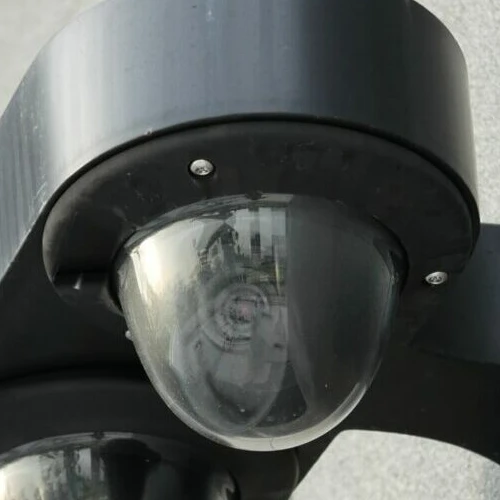Brydon
October 2, 2023
Numerous nations employ surveillance cameras in public spaces as a proactive measure to improve public safety and mitigate various forms of criminal activities. Let us examine the multifaceted role of Closed-Circuit Television (CCTV) cameras and video systems in bolstering security infrastructure.
Why Security Cameras Are Needed for Crime Prevention
Security cameras play a significant role in deterring and solving crimes by providing surveillance, enhancing public safety, and aiding law enforcement. The following are a handful of reasons for the significance of these cameras:
Deterrence Factor
Surveillance cameras act as vigilant sentinels, keeping an ever-watchful eye on your property. Their mere presence can discourage potential criminals from targeting your home or business. According to a study by the Urban Institute, properties equipped with visible surveillance cameras are 2.7 times less likely to be targeted by burglars and other criminals.
Having surveillance cameras can also help find possible suspects. For example, if a criminal sees a camera, they would not want to commit a crime in that place.
Evidence Collection
While deterring crime is important, surveillance cameras also play a vital role in capturing evidence when crimes occur. In numerous criminal investigations, camera footage has proven instrumental in identifying suspects and securing convictions.
Cameras can provide the police with evidence if a crime occurs. The videos from these cameras can show who the suspects are and be used in court. Besides giving proof, these cameras also help the police catch suspects. If a camera sees a suspect, the police can use that information to find and arrest the person.
Providing law enforcement with a clear visual record of events can be the key to solving and preventing future crimes.
Peace of Mind
Beyond crime prevention, these cameras offer homeowners and business owners a sense of security and peace of mind. Realizing that your property is under constant surveillance allows you to go about your daily life confidently, whether at home or away.
Types of Security Cameras
Each type of security camera offers distinct advantages in safeguarding your property. Discover which one suits your needs from the following list:
- Wired Cameras
These security cameras are connected to a central recording device using physical cables. People use them in monumental buildings and businesses because they give a strong and reliable connection. They don’t get easily messed up by other devices like wireless cameras can. But putting them in takes more work and time because you have to run cables through walls and ceilings.
- Wireless Cameras
Wireless surveillance cameras are getting more popular because they’re easy to set up and can be checked from far away using a smartphone or computer. They use Wi-Fi or cell networks to send videos to a central device or the cloud.
Wireless cameras are great for smaller homes or apartments where it’s hard to run cables through walls and ceilings. But they could have trouble with other devices, causing problems, and could lose the signal in places with bad network coverage.
- Indoor Cameras
Indoor security cameras are made for watching inside a building, like a home or office. People use them to watch kids, pets, or workers and see if someone tries to break in. Indoor cameras are usually small and not very noticeable, and you can put them on shelves or hang them on walls or ceilings. They’re usually cheaper than outdoor cameras.
- Outdoor Cameras
Outdoor surveillance cameras are built to handle bad weather and are usually bigger and sturdier than indoor cameras. They watch outside a building, like a home, office, or parking lot.
Outdoor cameras offer versatility in installation, as they can be mounted on walls or poles and are equipped with advanced functionalities such as night vision, motion detection, and zoom capabilities. Outdoor cameras usually come at a higher price point than their indoor counterparts due to their enhanced features.
Visible vs. Hidden Cameras
The visibility of surveillance cameras can influence their effectiveness in crime prevention. This is a comparison of visible and hidden cameras:
Visible Cameras
- Deterrence: Visible cameras act as a visible deterrent to potential criminals. When people see these cameras, they are less likely to engage in criminal activities.
- Transparency: Their presence indicates transparency, indicating that the property is monitored and secure.
- Legal Considerations: In many jurisdictions, installing visible cameras on your property without consent is legal, as people can reasonably expect to be recorded in public areas.
Hidden Cameras
- Covert Surveillance: Hidden cameras are ideal for discreet surveillance when you want to monitor without alerting anyone to the camera’s presence.
- Privacy Concerns: Hidden cameras can raise privacy concerns, and there can be legal restrictions on their use, especially in areas where individuals have a reasonable expectation of privacy.
- Limited Deterrence: While hidden cameras can capture evidence, they will not deter criminals as effectively as visible cameras.
Placement and Installation
Proper placement and installation of surveillance cameras are necessary to their effectiveness. These are some key factors to consider:
| Placement and Installation | Description |
| Entry Points | Place cameras near entry points such as doors and windows, as these are common targets for burglars and intruders. Ensure that the camera’s field of view covers these areas. |
| High-Traffic Areas | Install cameras in high-traffic areas both indoors and outdoors. This helps capture people’s movements, which can be valuable in investigations. |
| Height and Angles | Position cameras at an appropriate height and angle to capture clear images. Avoid placing them too high or too low, resulting in less effective surveillance. |
| Adequate Lighting | Ensure proper lighting for outdoor cameras, especially during nighttime. Cameras with built-in infrared or night vision capabilities can capture clear images in low-light conditions. |
| Wiring and Connectivity | For wired cameras, plan the routing of cables to minimize visibility and protect them from tampering. Wireless cameras should be within the range of your Wi-Fi network for a stable connection. |
| Testing and Maintenance | Regularly test your cameras to ensure they are functioning correctly. Clean and maintain them to prevent obstructions or image degradation due to dirt or weather conditions. |

Remote Monitoring and Crime Prevention
Remote monitoring takes the capabilities of surveillance cameras to the next level. With technological advancements, many security camera systems allow users to access live footage and recorded videos remotely via smartphones, tablets, or computers. This is how remote monitoring enhances crime prevention:
Real-Time Alerts
Motion sensors and AI-based recognition technology surround many modern surveillance cameras. When unusual activity is detected, such as an intruder or suspicious movement, the system can send real-time alerts to the property owner or a security service. This enables immediate action, such as contacting the authorities or sounding alarms.
Quick Response
Remote monitoring enables property owners to respond quickly to potential threats. Whether at work, on vacation, or simply away from home, you can check the live feed from your surveillance cameras and take appropriate action in an emergency.
Evidence Preservation
In the event of a crime, remote access to video footage allows for preserving critical evidence. This can be invaluable in identifying suspects and ensuring a successful prosecution.
Security Cameras Maintenance
To use the effectiveness of your surveillance cameras and ensure they serve their purpose, follow these tips:
| Maintenance | Description |
| Regular Maintenance | Perform routine camera maintenance, including cleaning the lenses, checking for loose connections, and inspecting for physical damage. Address any issues promptly to avoid downtime. |
| Firmware Updates | Keep your camera’s firmware up to date to benefit from security enhancements, bug fixes, and improved performance. Manufacturers release firmware updates to address the camera’s weaknesses. |
| Storage Management | Manage your video storage efficiently. Depending on your camera system, this can involve setting retention policies, backing up footage, and ensuring sufficient storage capacity. |
| Secure Access | Protect the access to your security camera system with strong passwords and two-factor authentication (2FA). Only provide access to authorized individuals to prevent unauthorized tampering. |
| Regular Testing | Periodically test your cameras and the entire surveillance system to ensure all components function correctly. Verify that motion detection, alerts, and remote access are working as intended. |
| Review and Adjust Placement | Review camera placement periodically as your property or business evolves to ensure they cover relevant areas. Make adjustments as necessary to adapt to changes in your security needs. |
| Legal Compliance | Stay knowledgeable about local laws and regulations regarding surveillance and privacy. Ensure that your camera usage complies with these laws to avoid legal issues. |
Install Telus Security Cameras Today
Surveillance cameras are indispensable tools in crime prevention. Their deterrence factor, evidence-collection capabilities, and potential for remote monitoring make them a valuable asset for homeowners and businesses alike.
Installing Telus security cameras today is a smart and proactive step toward enhancing the safety and security of your home or business. These cameras offer advanced features, including remote monitoring, motion detection, and high-quality video recording, ensuring reliable protection around the clock.
With its convenience, you can rest assured that your property is well-guarded against potential threats. Don’t wait for an incident; take control of your security and contact us at MAG Smart Security for your Telus security cameras today to safeguard what matters most to you.



